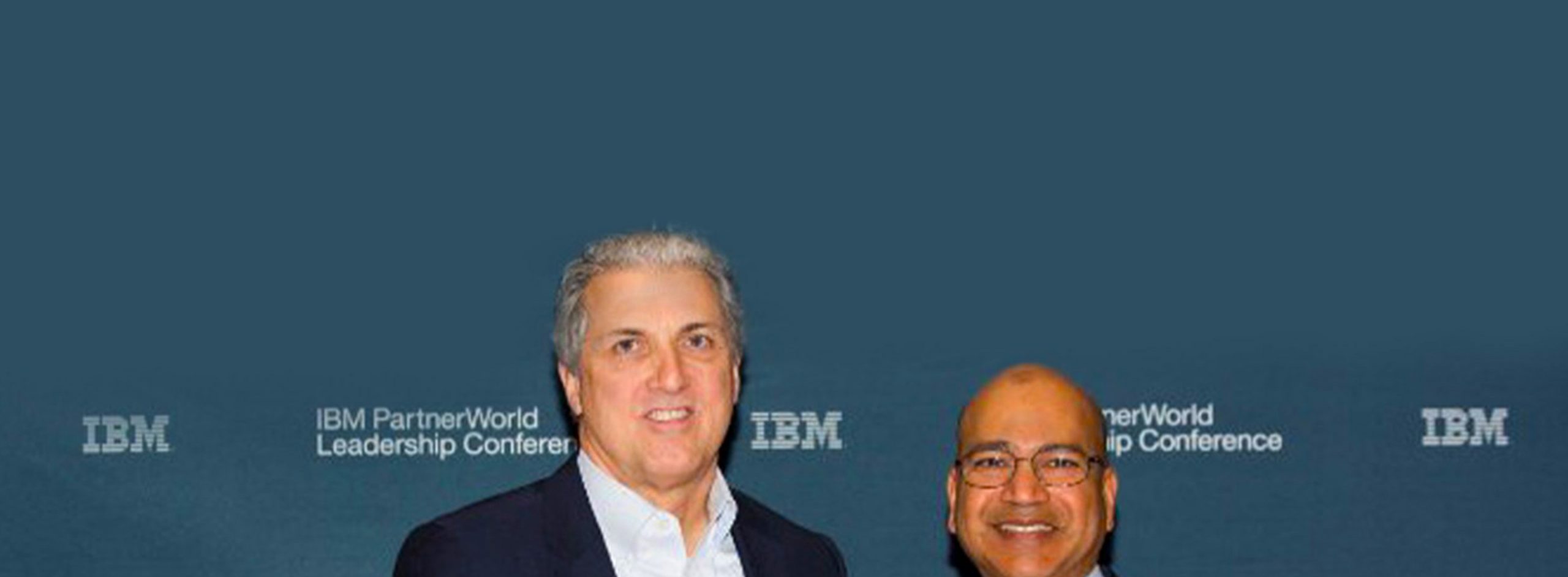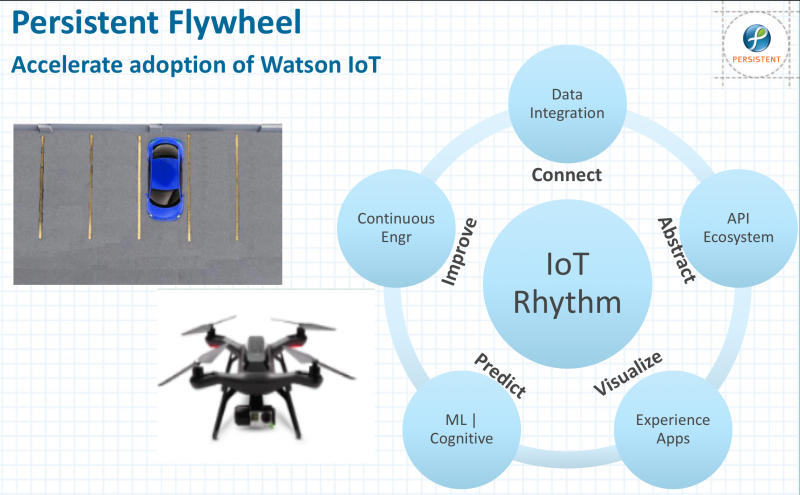IBM’s Watson IoT platform is a key enabling technology that Persistent Systems is using to create transformational solutions for various industry sectors. We started this journey in April, 2016 – less than a year back – and we’ve built about 10 systems over the past year. The learnings have been tremendous, and we encapsulated them, early in our journey, by crafting the Persistent Flywheel IoT methodology. Here’s a brief overview.
We posit that there are five foundational elements of IoT systems. Clearly, the discussion with customers starts with consultation around their requirements and imperatives. With that basis, we lay these foundational elements, to initiate the rhythm of building and improving IoT systems –
- Data – connectors to devices, gateways, enterprise systems and third-party sources, and any associated caching or persistent storage of data
- API’s – the conduits for connecting not just a customer’s applications (including systems of record and decision / workflow systems), but those of its partners and the broader industry ecosystem
- Experiences – the framework for rapid development of applications that support a variety of consumption form factors
- Cognitive & Predictive analytics – the ability to analyze text, speech, vision, or gestures using incoming signals, and to create predictive models that facilitate, say, real-time intervention
- Continuous Engineering – the tooling for ongoing design and revision of products, which can now leverage data collected from IoT systems, to create a closed-loop for product innovation
Here’s an illustration –
We built a system that uses drones to monitor the occupancy of parking spots in a large open lot. The Flywheel approach helped rapid development of this system and we expect that the following enhancements will happen over time –
- Data feeds may change as new monitoring systems are added and appropriate device registration and authentication will be needed
- Partners (local businesses) might be incented to direct their customers to this lot, and they would leverage the parking lot’s APIs to provide offers in digital coupons
- The lot occupancy status, currently shown in IBM’s TRIRIGA (facilities management) software, can be exposed to various administrative apps or on the mobile phones of customers
- The Watson visual recognition service will be trained further, possibly to recognize different types of vehicles – cars vs. motorcycles vs trucks
- Data collected from the IoT system can inform the distribution of vehicle types in the parking lot, which can be relayed via a 1-click access, to software used to manage requirements for the parking lot management software. Persistent currently uses the IBM Continuous Engineering tools such as RTC, RQM, DNG and Rhapsody.
It’s been fun working with IBM on such projects, and we were honored to receive the Beacon Award Finalist recognition at the 2017 IBM Partnerworld Leadership conference in Las Vegas.
The Persistent booth #877 at IBM InterConnect, March 19-23, 2017, will feature this system too.
PS: Persistent System’s previous Watson IoT award.
To learn more how to transform your business using the power of IoT.
Find more content about
IBM (5) Watson (2) Cognitive (1) IBM InterConnect (1) IBM Partners (1) IoT systems (1) Persistent Flywheel (1) WatsonIoT (1)




